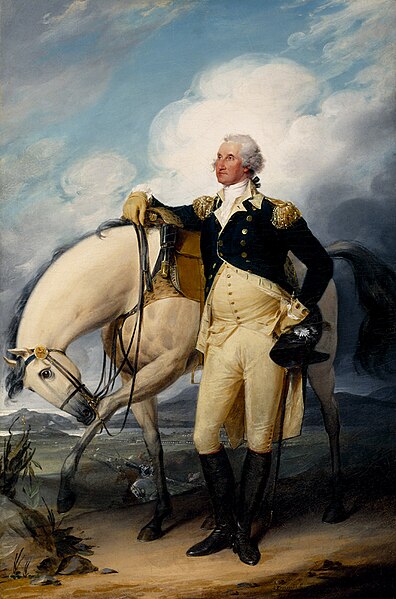Washington at Verplanck's Point
Washington at Verplanck's Point is a full-length portrait in oil painted in 1790 by the American artist John Trumbull of General George Washington at Verplanck's Point on the North River in New York during the American Revolutionary War. The background depicts the September 14, 1782 review of Continental Army troops Washington staged there as an honor for the departing French commander Comte de Rochambeau and his army.
Washington at Verplanck's Point
George Washington by John Trumbull, 1790, New York City Hall
John Trumbull was an American painter and military officer best known for his historical paintings of the American Revolutionary War, of which he was a veteran. He has been called the "Painter of the Revolution". Trumbull's Declaration of Independence (1817), one of his four paintings that hang in the United States Capitol rotunda, is used on the reverse of the current United States two-dollar bill.
Self-portrait, c. 1802
John Trumbull, painted by Gilbert Stuart in 1818
General George Washington at Trenton, a 1792 portrait by Trumbull now housed at Yale University Art Gallery in New Haven, Connecticut
Trumbull, painted by James Frothingham






